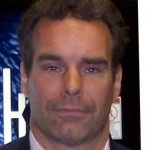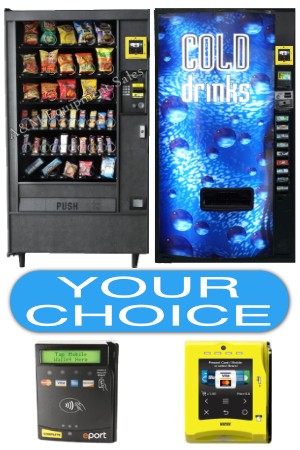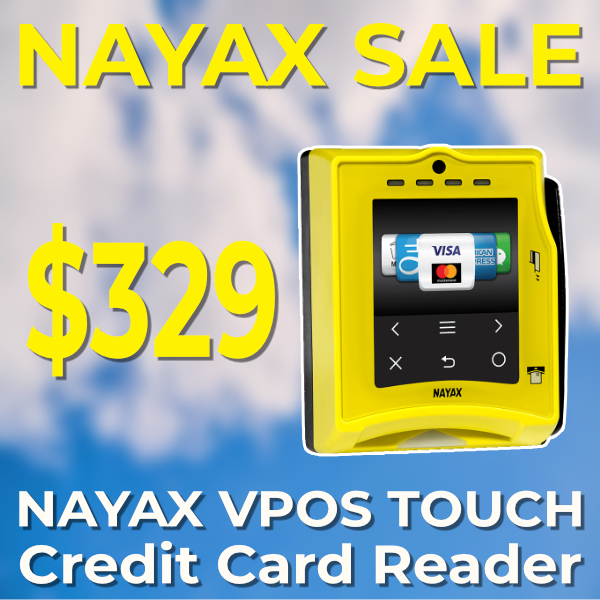Vending Efficiency Delivering Product An interview with Larry Towner, vending consultant
In this podcast, Larry discusses: Vending Efficiency Delivering Product
- Plan your route schedule in advance
- Park out of the way and avoid being off the curb if possible: marketing, security, safety
- Inventory of each machine in one box
- famous saying: “Vending is a business of minutes”
- Do a pick list
- Limit trips from truck to machine
- Items to keep in your pocket
- Drive in a line to limit windshield time
- Plan well for a smooth and efficient route
EPISODE TRANSCRIPT:
Tom Shivers: I’m Tom Shivers with the Vending Business Show here with Larry Towner who is a vending business consultant. Larry sold the majority share of his vending business a few years ago. Thanks for coming back, Larry.
Larry Towner: Good to be back, Tom.
Tom Shivers: Our topic Vending Efficiency Delivering Product The last time we talked, you had a lot of interesting things to say about efficiency and specifically you’re talking … told us a lot about loading the truck effectively so that you can have a smooth flow of your … of the products from the truck right into the machine. What are we gonna cover today?
Larry Towner: Well, I think today, Tom, what we’ll talk about is now that we’ve got the truck loaded and we’ve got it ordered in a way that makes sense, basically the way you have your machines laid out, let’s talk about getting out to the machines and getting out to the accounts.
Tom Shivers: Okay.
Larry Towner: Like I say, you’ve got your truck loaded. You’re ready and you’re rearing to go. Generally, just as a course of action, I usually started my day the night before. What I would do is … Well, actually, I started a week before, but I would have my route schedule printed out on a weekly calendar program. I used a office shelf calendar program that you can get at any store, but that allows you to do repeating schedules where you can do things weeks and weeks and weeks in advance. The keys here are is when you’re scheduling your time, you do it the night before so you have an idea. One thing that a lot of people don’t do, they don’t plan around traffic. Tom, you live here in metro Atlanta like I do. Is traffic a factor here?
Tom Shivers: Just a little bit.
Larry Towner: A little bit, yeah. We, in the vending business, don’t get paid to sit in front of the windshield of the truck. We get paid to sit in front of the glass of the machine and actually fill that machine up. One of the things that I always did, and just depending on the days, I would go and look on … look at my schedule and say, “Where do I need to be during the traffic time?” [inaudible 00:02:19] and I always used both traffic times, both morning and afternoon. I would be making sure that I had a series of stops that were all very, very close together during those traffic times.
Larry Towner: Generally vending people start very early in the morning. They start 4:00 AM, 5:00 AM, 6:00 AM in the morning. By the time the main traffic time rolls around, you are pretty much … you should be in a stop if you’re doing everything right. Of course, here in metro Atlanta as you know, you can get stuck in traffic anytime of the day, anytime of the night. It’s just how it goes being a major city. Anyway, you start the night before you go and you lay out your route and where you wanna go and when you think you wanna be there. You give yourself an approximate amount of time as far as your sales and your dollar [inaudible 00:03:01] per your accounts. That’s the first place where you start.
Larry Towner: When you get into the accounts, there’s a couple of techniques … Or, you’re heading into the accounts. You pull up into the driveway. There’s a few things that I used as a rule of thumb. One is I’m very marketing oriented and also … but also safety and security conscious, too. I would be very careful. I usually parked on the loading docks and I wanted to make sure that we were out of the way. We didn’t wanna be an eyesore to anyone and we didn’t wanna have to work off a curb if we could help it. You end up working off a curb a lot, but you try not to work off the curbs where you’re out in the plain view of everyone, at least that’s my opinion. I always liked to kind of stay back and out of the way.
Larry Towner: Then again, I don’t like to be in dark corners either for security purposes where there somebody might come and accost you because the minute they know you’re in the vending business, they know you’ve got cash and you become an easy target. Try to stay like, if you’re working at night, well-lit areas and things like that. You get out of your truck. Now, there’s several different ways to do it in the vending business. One way … The way that I currently do it is I have boxes inside the truck. Inside each box I carry a whole inventory of a machine, rolls into the account with me. I have a set … preset level of inventory that’s in each box and it’s arranged just the same way as the machines are. I start top shelf down and work my way down through the machine using my boxes.
Larry Towner: You think this is kinda silly, but the amount of time that you spend walking back and forth between your truck and your … the machines can add up to considerable time. In past shows, we talked about how the vending business is a business of minutes. It’s all about how many minutes. If you can cut five to ten minutes out of each stop, you can add one to two stops per day, which is giving you an extra impact on your bottom line of your business.
Larry Towner: We roll in to our stops with basically a full amount of snack on the thing and then we do a pick list on the drinks. You can roll in and do a pick list on your accounts if you want. I do that on some of the more difficult locations that I have. If I have to go up some stairs and I don’t have an elevator access or something like that, I might go in and make a pick list. A pick list just is you go into the machine and you pick out the particular items you need as per the shelf and you write them down in a card you brought. You pull them out. You put them into a box and you just carry one box in instead of carrying in nine boxes, which is what I currently take in with me every time.
Larry Towner: If I have a good, easy access, I roll the whole thing in. I make one trip into the machine. I don’t have to make multiple trips in and out in and out and in and out. Generally we try … Right now we limit our trips in and out to two. We can’t carry the whole amount of product with drinks and snacks in our hand truck all at once. We usually do too much volume to do that. That’s should be your goal that you have that much volume. Do you get an idea of what I’m talking about, Tom?
Tom Shivers: Yeah. It sounds like you wanna cut off those minutes and find a way to get things in and out quickly.
Larry Towner: Right. Right. That’s really the key. You also, when you make your lists, make sure you can read your lists so that you know. When you come out to get your drinks, don’t guess. Make sure you know exactly what you need. Again, to make one extra trip back out to the truck takes anywhere from two to five minutes just depending on the stop, but two to five minutes adds up at the end of the day. That’s what we do. We also walk in with our money bags.
Larry Towner: We walk in … I keep in my pocket, you’re gonna think this is funny, but I keep in my pocket, I carry two pens, a small screwdriver, a magic marker, and I also carry a three by five pack … I don’t use three by five cards, but they’re the three by five spiral ring notebooks is what I use now. I used to use three by five cards. They got a little pricey. I keep those in my pocket. I always have something to write with. I always have something to do a small minor repair and or open a box, which is what that little screwdriver is for. If I need to mark on something, I always have a marker. Don’t think it means that much, wait til you forget and you have to run out to the truck to get a small screwdriver to tighten something up or to cut something.
Tom Shivers: How ’bout a stopwatch?
Larry Towner: We’ve … We’re not UPS yet. If you’ve ever talked to … When you get out there, talk to a UPS driver. They’ll tell you, they’re measured by the minute with a watch, too. It is something that if you wanna do it, actually, we used to do a little bit. We tried. We’d time ourself and see how long it’d take us to get in and out. We would strive to do better and better on a daily basis.
Larry Towner: The key, again, it starts at night though. You wanna make sure you have all the prior … It starts the day before. You want all that product on the truck and you wanna make sure you have enough. You wanna make sure you get your boxes full and get your route scheduled because it’s the same issue if you’re driving … you don’t wanna drive back and forth and back and forth. You wanna drive in a line. We generally work our route lines … or routes in circles, where you start at one place, you go out, you loop around, and you end up back at home. We try to limit the amount of windshield time between stops because, again, we don’t get paid to drive. We get paid to fill.
Larry Towner: That’s really, really critical. All it takes is good planning. I think in a previous show we had talked about scheduling as far as your … how …what’s your interval between stops are as far as weeks go or months or days. It just depends on the size of the account. Again, you have to integrate all this information together so that you’re nice and smooth and efficient. Theoretically, on a great day, you’re gonna spend 80% of your time filling machines and 20% of your time driving, if you’ve really got everything clicking and doing really well. That’s where you’ll be.
Larry Towner: That’s some of the tips is basically use a pre fold type system. If you get farther on and you have better resources, there’s all kinds of technological things that stream real time data back into your handhelds or into your iPhones and stuff like that. For most guys starting out, you can’t afford that technology. It’s very, very expensive. It works great for very, very large companies, but for small guys it’s just a little pricey.
Tom Shivers: Good stuff, Larry. Thanks for the tips. Tell us a little about your business and what you do.
Larry Towner: Well, we do vending consulting. We specialize primarily in startup type operations and helping guys get out there and get efficient so that they can start to make some money in this business because, believe it or not, just because you buy it for a quarter and sell it for 50 cents, you can’t necessarily make money on that. We help people get efficient so that they can start earning money faster.
Tom Shivers: How can people contact you?
Larry Towner: Best way to get ahold of us is send us an email. It’s [email protected].
Tom Shivers: You’ve been listening to Vending Efficiency Delivering Product at the Vending Business Show, a publication of A&M Equipment Sales. More Blogs of the Vending Business Show Vending Efficiency Operating Procedures



